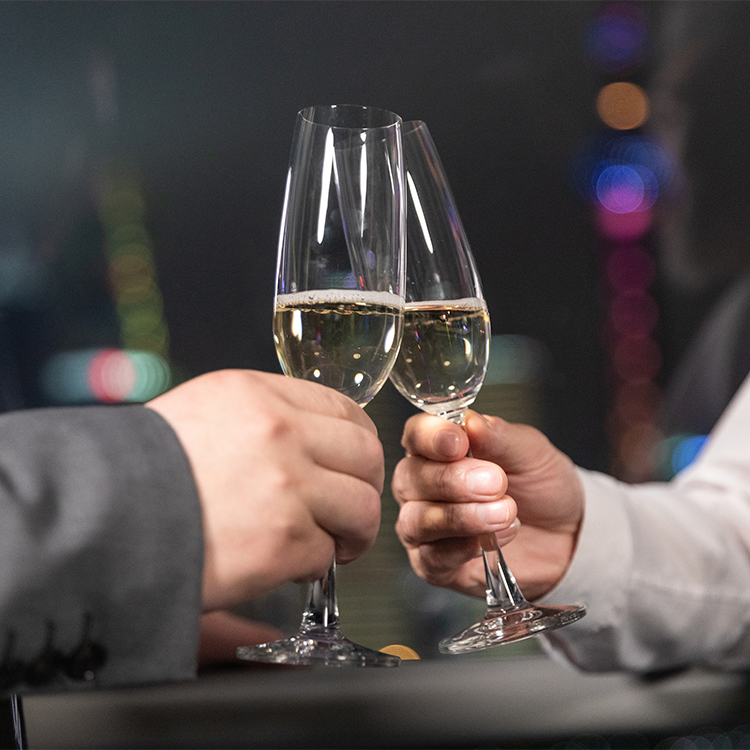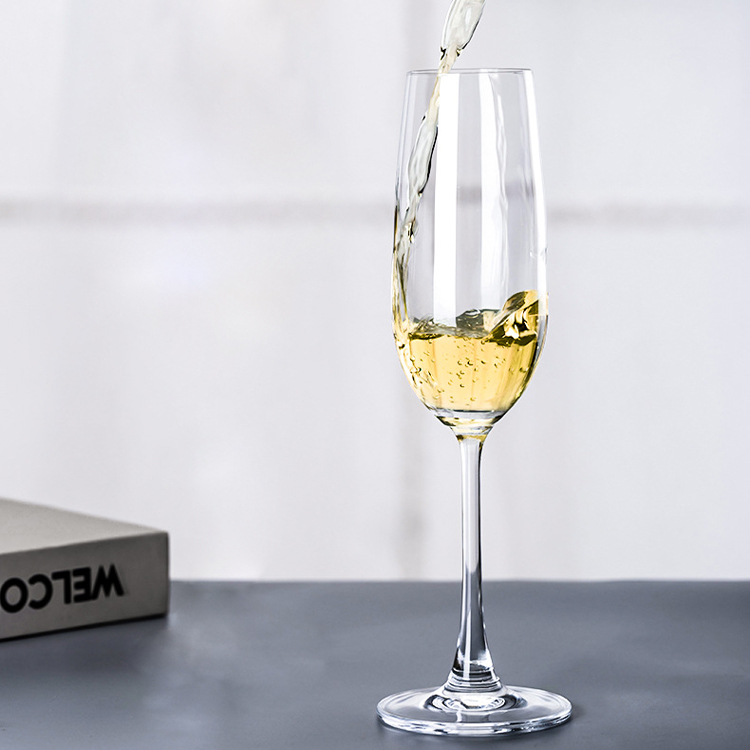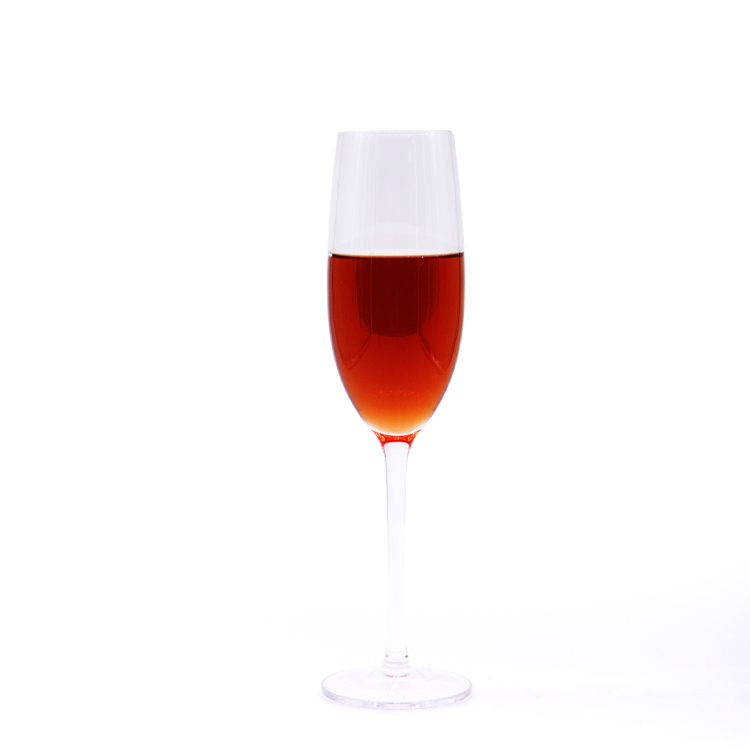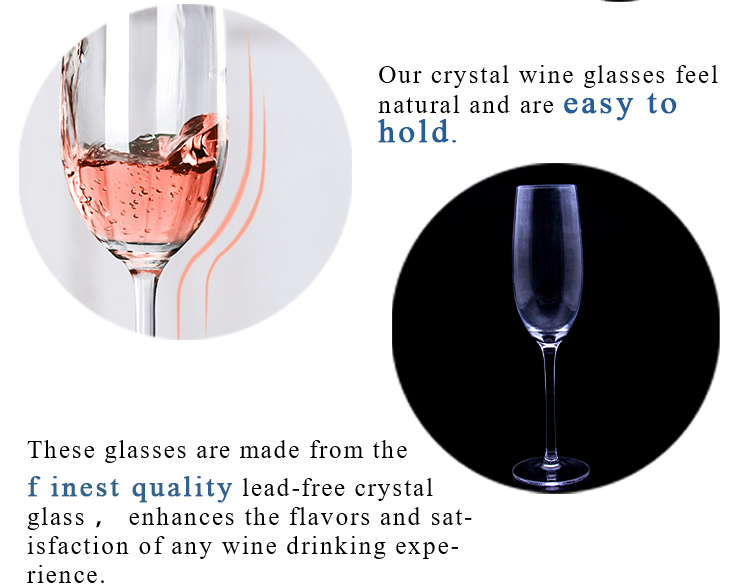







Champagne Glass for Wine Glasses
| Min. Order: | 5000 | ||||||||
| Lead Time: |
|
||||||||
| Sample: | Free | ||||||||
| Customization: |
|








| Min. Order: | 5000 | ||||||||
| Lead Time: |
|
||||||||
| Sample: | Free | ||||||||
| Customization: |
|
| Place of Origin: | Anhui, China |
|---|---|
| Use: | Champagne, Wine, Juice |
| Material: | Glass |
| Logistics Mode: | Express, Sea freight, Land freight, Air freight |
| Sea Port: | Lianyungang |
| Supply Ability: | 2000000 pieces/Year |
|---|---|
| Packing: | Pallet or Carton Packaging |
| Size: | 8X8X20cm |
| Gross Weight: | 1kg |
| Design Style: | Modern |
Champagne, the name derived from its breathtaking site of origin, is an elegant, sparkling wine made primarily from the grapes of Pinot Noir, Chardonnay, and Pinot Meunier. There are 15 different types of Champagne, ranging from the driest Brut Nature to the sweetest Doux, each with its own distinct flavors and effervescence to give your tastebuds a delectable treat.


1. CHAMPAGNE FLUTE
Flutes are a classic glass of choice for tasting Champagne. Champagne flutes are designed specifically for Champagne and sparkling wine, exhibiting a lengthy stem and an elongated, slender bowl. This style of Champagne glass is most desirable because it helps to preserve the bubbles, while the longer stem prevents hands from warming the liquid too quickly. Flutes are good for elevating any occasion. These glasses are sophisticated enough for those monumental celebrations as well as toasting to the smaller, more intimate moments.
2. STEMLESS CHAMPAGNE GLASSES
Stemless Champagne glasses duplicate the slim body and narrow rim of a flute but have a flat base rather than a long stem. This style is simple and modern, yet still classy and graceful for any occasion. Stemless glasses optimize the bouquet, taste, effervescence, and balance of all kinds of Champagne and sparkling wines so that you can still have the same tasting experience with an effortless look.
3. CHAMPAGNE COUPE
Coupe glasses were more popular in the 1950s, with their design displaying a very wide, saucer-like shape and a shorter stem. The wideness and shallowness of the bowl expose the liquid to air, which quickly depletes the bubbles and softens the taste of your Champagne. If you don’t like too many bubbles in your sparkling wine then this is a good type of glass to use. It is also an iconic and timeless style to use at themed occasions and holidays. It is best enjoyed with a much sweeter wine, such as a Brut or Doux.
4. CHAMPAGNE TULIP
The Champagne tulip is a recognizable and the more commonly used style of glass, with its wider-flared body and tapered mouth. It is ideal for Champagne tasting because of how its shape gradually widens in the center of the glass. This allows the aromas to fully develop, as well as gives space for the bubbles to accumulate and pop. Tulips also maintain a longer stem, so that you can avoid warming your wine or leaving finger smudges along your glass. The Champagne tulip glass is ideal for any tasting experience, whether it’s hosting an elegant dinner party or just simply enjoying it with a book and cozy blanket on a cool, autumn night.
5. WIDE TULIP CHAMPAGNE GLASS
Much like the tulip, the wide Champagne tulip glass offers the same graceful shape, but the wideness of the bowl is lower and located more towards the stem. This is practical for collecting aged flavors found in vintage Champagnes, or Champagnes made from grapes from a single year. High-quality Champagnes, such as Dom Perignon, should be enjoyed in a wide tulip glass. The wide tulip will transform all of your dining and tasting experiences.
6. TRUMPET CHAMPAGNE GLASS
The biggest difference between a flute and trumpet glass is the mouth - the Trumpet glass has a narrow body that opens up at that rim (like the instrument, hence the name). The concept of the trumpet glass is designed to concentrate on the champagne bubbles and maximize flavors on the tongue. Trumpet Champagne glasses come in all different shapes and sizes, from longer to shorter stems.

For more information, please contact IDEA Bottle.